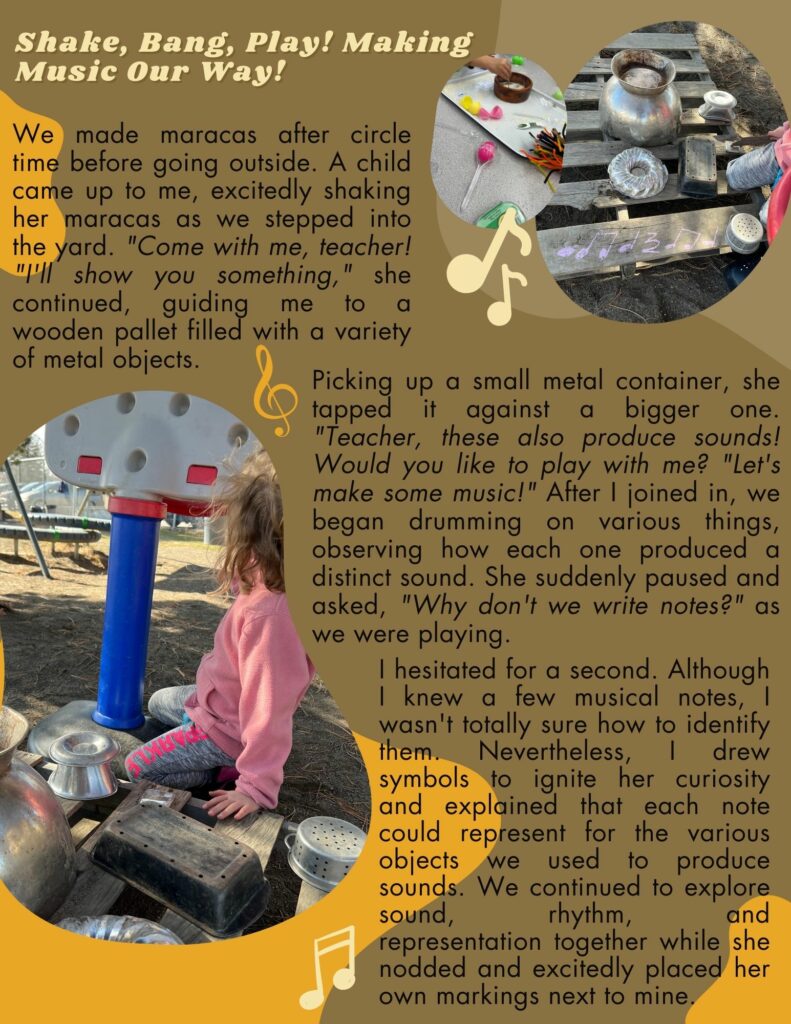
Reflection
The value of child-led inquiry and the educator’s role as a co-learner rather than a knowledge-holder are both highlighted in this musical exploration. By turning ordinary objects into instruments, the child’s invitation, “Listen, teacher, these make sounds too!” demonstrates their ability to connect materials and sounds. Their suggestion to “write notes” creates a surprising yet significant connection between symbolic representation and music.
My early concerns about musical notes may have been a barrier for me as an educator, but instead it created a chance for collaborative learning. I responded to the child’s interest in a way that prioritized process over perfection by using notes to represent sound-making objects. The BC Early Learning Framework (2019), which encourages educators to welcome ambiguity and co-construct knowledge with children (p. 75), is in line with this moment.
This encounter also emphasizes how crucial play and experimenting are to learning. The child was looking for a means of expressing their thoughts—to make the sounds visible—rather than for accuracy. This is in line with the BC ELF’s communication and literacy standards (p. 80), where children experiment with a variety of expressions like movement, sound, and symbols to make meaning of the world.
Going forward, I wonder:
- How can I encourage children’s interest in music and notes even more?
- How else might we record and represent the sounds that we make together?
- What relevance does this particular instance have to broader cultural and individual understanding of music?
This encounter serves as a reminder that teaching is about accepting children’s questions and learning with them, not about knowing all the answers.